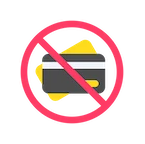The Website Traffic Glossary is a comprehensive guide to key terms and concepts related to website traffic.
Adjust the Slider to Select Quantity
Selected Quantity: 1



Website Traffic Glossary
1. Organic Traffic
Organic traffic refers to visitors who find your website through unpaid search results on search engines like Google, Bing, or Yahoo. These visitors land on your site because of relevant keywords in your content that match their search queries. Organic traffic is highly valuable as it is the result of good SEO practices and quality content.
2. Paid Traffic
Paid traffic is generated through advertising efforts such as Google Ads, Facebook Ads, or other paid marketing campaigns. When you pay for traffic, you can target specific audiences based on their interests, behaviors, and demographics, ensuring that your website gets the attention of the right visitors.
3. Direct Traffic
Direct traffic consists of visitors who type your website’s URL directly into their browser or use a bookmark to visit your site. This type of traffic indicates that users are already familiar with your brand or website and are intentionally visiting it.
4. Referral Traffic
Referral traffic comes from visitors who click on a link from another website, blog, or online source that directs them to your site. This can include backlinks from articles, guest posts, or social media platforms. Referral traffic helps improve your site’s authority and visibility.
5. Social Traffic
Social traffic refers to visitors who land on your website from social media platforms such as Facebook, Instagram, Twitter, LinkedIn, and others. This traffic is driven by links posted on social media, including organic content and paid ads.
6. Bounce Rate
Bounce rate is the percentage of visitors who leave your website after viewing only one page. A high bounce rate could indicate that visitors aren’t engaging with your content, while a low bounce rate suggests that users are exploring more pages on your site, indicating better engagement.
7. Session
A session refers to the period a user spends on your website during a single visit. A session can include multiple page views and interactions with your content. Tracking sessions helps you understand how long users stay on your site and which pages they interact with the most.
8. Conversion Rate
Conversion rate measures the percentage of visitors who complete a desired action on your website, such as making a purchase, signing up for a newsletter, or downloading content. A high conversion rate indicates that your website is effective at encouraging visitors to take action.
9. Targeted Traffic
Targeted traffic refers to visitors who are specifically chosen based on predefined characteristics, such as location, interests, or behaviors. Buying targeted traffic ensures that your website receives visitors who are most likely to engage with your content or make a purchase.
10. Referral Link
A referral link is a URL from another website that directs visitors to your site. Referral links help increase your site’s exposure and can be a source of valuable inbound traffic, especially if they come from high-authority sources.
11. Unique Visitors
Unique visitors are the distinct individuals who visit your website within a specific time period. Unlike total visits, which count repeated visits by the same user, unique visitors help measure the true size of your website’s audience.
12. Mobile Traffic
Mobile traffic refers to visitors who access your website from mobile devices, such as smartphones and tablets. With an increasing number of users browsing on mobile, ensuring your website is mobile-friendly is essential for capturing this traffic.
13. Geotargeting
Geotargeting is the practice of delivering content or advertisements to users based on their geographic location. This allows businesses to reach local customers or tailor their messages for specific regions, improving the relevance of their traffic.
14. Click-Through Rate (CTR)
Click-through rate (CTR) measures the percentage of users who click on a link or ad compared to the number of people who saw it. A high CTR indicates that your content or ads are compelling and relevant to the audience.
15. Traffic Sources
Traffic sources are the various ways users can arrive at your website, including search engines, social media, direct visits, referral links, and paid advertising. Analyzing traffic sources helps businesses understand where their audience is coming from and which channels are the most effective.
16. Paid Search Traffic
Paid search traffic comes from search engine ads, such as Google Ads, where businesses bid for keywords relevant to their products or services. This allows them to appear at the top of search results and drive targeted traffic to their website.
17. Session Duration
Session duration refers to the total amount of time a visitor spends on your website during a single session. Longer session durations generally indicate that users are finding value in your content and engaging with it deeply.
18. Exit Rate
Exit rate measures the percentage of visitors who leave your website after viewing a specific page, regardless of whether it’s the first or last page they visit. A high exit rate on certain pages may indicate issues with the page’s content or design that need improvement.
19. Retargeting
Retargeting is a form of online advertising that targets users who have previously visited your website but didn’t convert. Retargeting ads remind these visitors about your products or services, encouraging them to return and complete the desired action.
20. Viral Traffic
Viral traffic refers to an influx of visitors to your website resulting from content that is shared widely across social media platforms. This can be through organic sharing, memes, videos, or highly engaging articles that go viral.
By understanding these terms, you can better analyze your website’s traffic, improve user engagement, and develop strategies to enhance your online presence.

